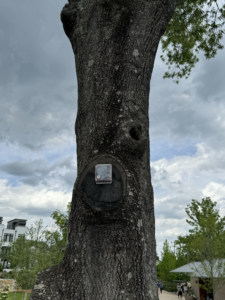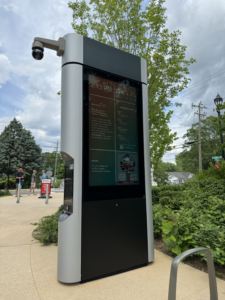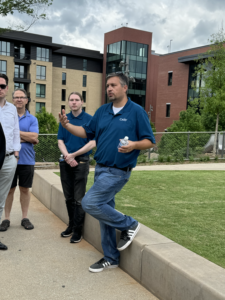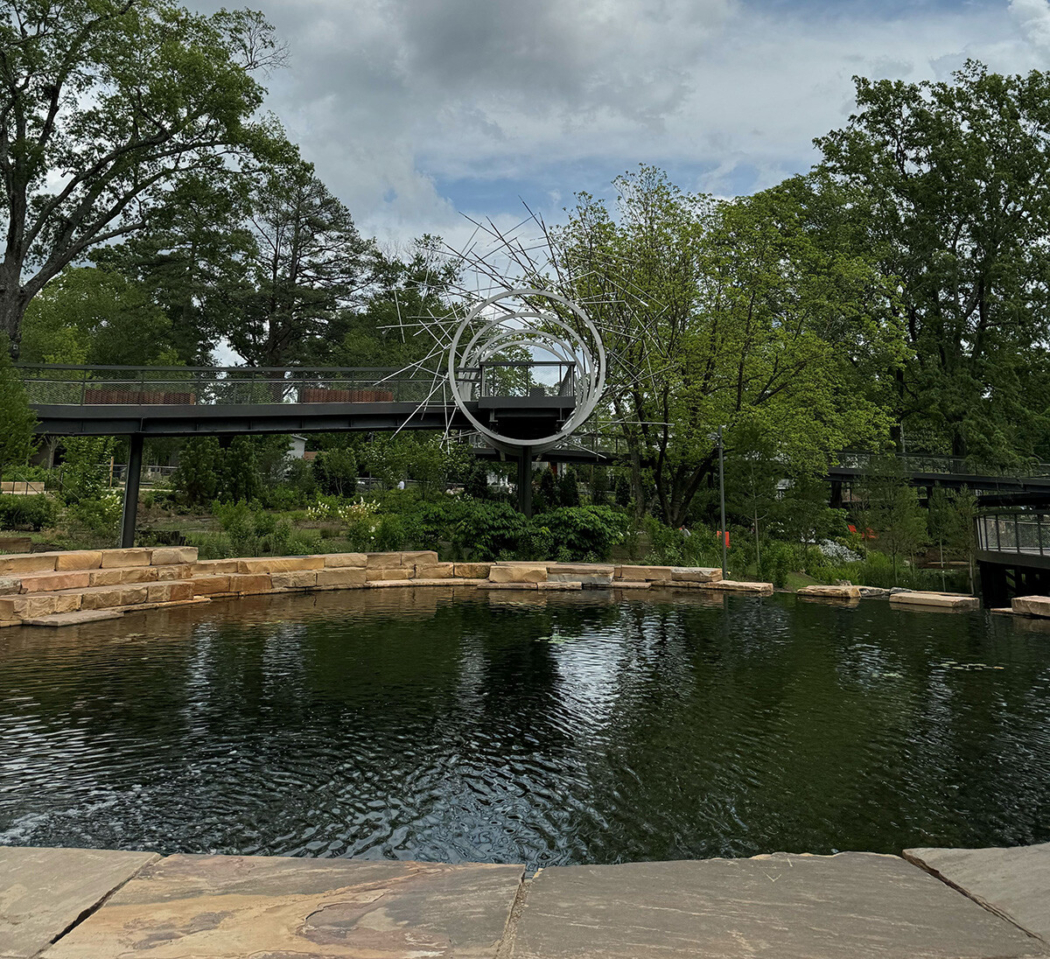As the Downtown Cary Park approaches its six-month anniversary, the well-earned hysteria of its opening has begun to die down. Many Cary residents are only just beginning to appreciate this amazing gift in the middle of our town. The 7-acre park offers delightful perks including a dog park, shops and a bar, the pavilion and fountain, and a multitude of games and activities. Oh, and you might notice a little playground.
More than 20 years in the making, the Downtown Cary Park is a marvel of sustainable development, a haven for public art, and a hub for

Example of a tree sensor within the park
community events. What you may overlook on your visits is the incredible and cutting-edge technology that keeps the park clean, safe, and comfortable.
The park uses a central hub for data collection from a range of devices across the area. These devices collect information on everything from park temperatures to the amount of paper towels in the restrooms. Door opens, trash and recycling quantities, air quality, and weather data are all collected and used to manage the park experience. These insights also help inform efficiency and cost-saving measures available to the town.
One of the key tools in place is the eight temperature sensors that delineate zones throughout the park. These zones represent distinct microclimates across the park created by the elevation, amount of tree coverage, nearby water features, and the position of buildings, among other factors. The temperature sensors provide insights into how the various parts of the park feel at different times of day, in all seasons, and in various weather conditions, which can be used to make future decisions about the evolution of the park’s features. Additional weather data collected from a nearby roof can also inform critical weather for park alerts. Eventually, the hope is to use this data for dynamic smart solutions, such as turning off the splash pad when lightning is detected nearby.

One of four digital Information Kiosks positioned throughout the park
Other technology features are more noticeable, such as the four large information kiosks spread throughout the park. These giant displays provide maps and other information, previews for upcoming events, and can be used to display critical information in case of emergencies or weather alerts. They’re also interactive, allowing users to sign up for the park newsletter.
In deploying all these tools, the Downtown Cary Park stands as a testbed for functionality and services that may benefit other parts of the town. One example is the sensors that have been added to trees in the park to monitor their movement. These sensors collect data over time and can provide early insights if a tree is leaning dangerously or at risk of falling in a storm. They might later be used in additional Cary parks or even for building safety and other applications within different Town departments.
Despite the widespread automation, the Downtown Cary Park is still run by a dedicated team, directed by General Manager Joy Ennis. Park ambassadors wander the grounds throughout the day, providing human insights and checking on things like the temperature of the shiny, reflective playground slides. For this,

Cary IT employee Ted Urbaniak speaks about the collection of sensor data.
ambassadors use a heat gun- comparatively old-fashioned tech to determine if the slides need to be closed during high temperatures.
For Ennis and the other town employees who have brought this park to life, the project generates enormous pride, but in many ways, it’s just getting started. The tech embedded throughout the park provides insights and value for the town but also contributes to its continued evolution and success. As a cutting-edge example of what data can do for a park, the Downtown Cary Park will serve as an example not only for the Triangle but nationally as well, demonstrating the future of urban and economic development.








WOW!!!! I am so excited to learn about the Park.